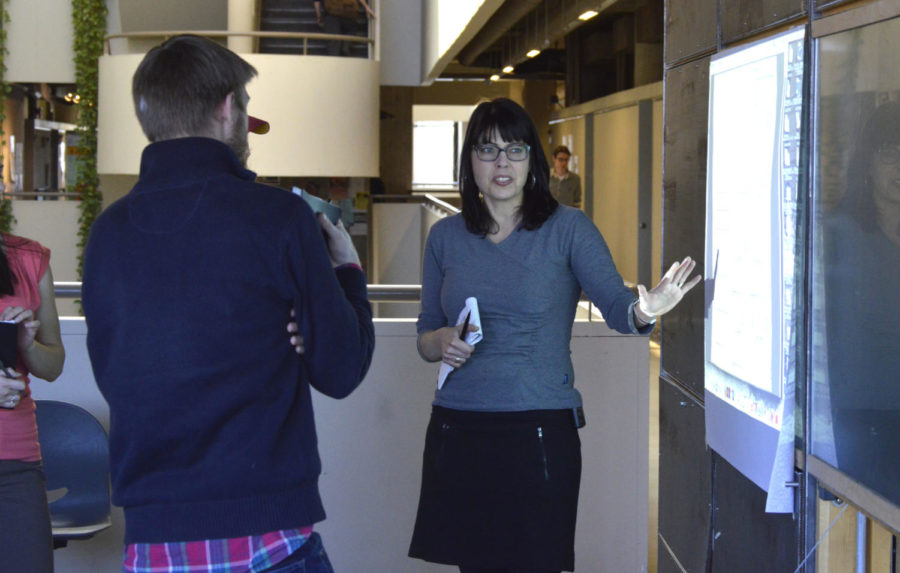Public Interest Design improves struggling neighborhoods
Matthew Rezab/Iowa State Daily
Nadia Anderson, assistant professor of architecture and urban design, discusses public interest design with students in her interdisciplinary design studio class at the Bridge Studio in the College of Design. Public interest design takes ecological, economic, and social issues into account when designing products, structures, and systems.
March 24, 2015
Public interest design is an emerging field in the world of design.
This new study meshes expertise of designers with the knowledge of community members to better the neighborhood area through design. Public interest design can also be defined as community design, participatory design or social interest design.
One of the people establishing this field in Iowa is Nadia Anderson, assistant professor of architecture and urban design. Anderson is also the extension specialist and co-director of the ISU Community Design Lab.
The design lab’s mission, according to the website, is “partnering with communities and organizations, combining local knowledge and design research expertise to create equity and resilience through inclusive, transferable, innovative strategies and tactics.”
The design lab, consisting of about eight to 10 members on average, concentrates on organizing and executing projects by way of public interest design. On staff, they have co-directors Anderson and Carl Rogers, two full-time design fellows, and anywhere from four to six graduate students focusing on research for the projects.
“We’re not an official center,” Anderson said. “But we are a collaborative research group. Design is our research method.”
While the phenomenon of public interest design is spreading across the globe, the ISU Community Design Lab focuses on rural communities and urban neighborhoods in Iowa.
So far, the team has completed projects consisting of downtown vision plans, streetscaping, street corridors, improving sustainability for storm water management, improving walkways and bike lanes and renovating entire neighborhoods.
“A critical piece of public interest design is that the community that we partner with bring important knowledge about location, historical context and local needs,” Anderson said. “We’re figuring it out together so the community can really have a voice in what we’re doing in their neighborhood.”
The importance of this design field is multi-faceted. Not only is there a benefit for the locals who get to voice their opinion on the projects, but it also opens up a whole new occupational opportunity.
“Two percent of houses that get built in a year actually involve architecture. The other 98 percent is an available pool of people for this study,” said Bryan Bell, a speaker featured at the Design Building this past weekend who discussed public interest design.
In recent years, there has been a major increase in the interest and demand from students, firms, organizations and so on.
The field of public interest design is for those with a desire to go beyond the basic requirements of architecture. That is, it’s a field for individuals who want to do more for people than just design buildings.
Anderson worked in a basic architecture job for 12 years before coming to Iowa State. However, she said she felt like there was something missing from the occupation.
“I always felt as though there were so many needs that weren’t being met,” Anderson said.
She was alarmed when she saw communities with inadequate housing, or bad environmental conditions in poor neighborhoods.
Public interest design addresses these issues that caught Anderson’s, and those with similar concerns, eyes.
The ISU Community Design Lab is preparing for projects launching this summer focusing on sustainable agriculture in three communities. Additionally, the members will be doing design work in the Viva East Bank coalition in Des Moines and the SW Ninth Street corridor.

















